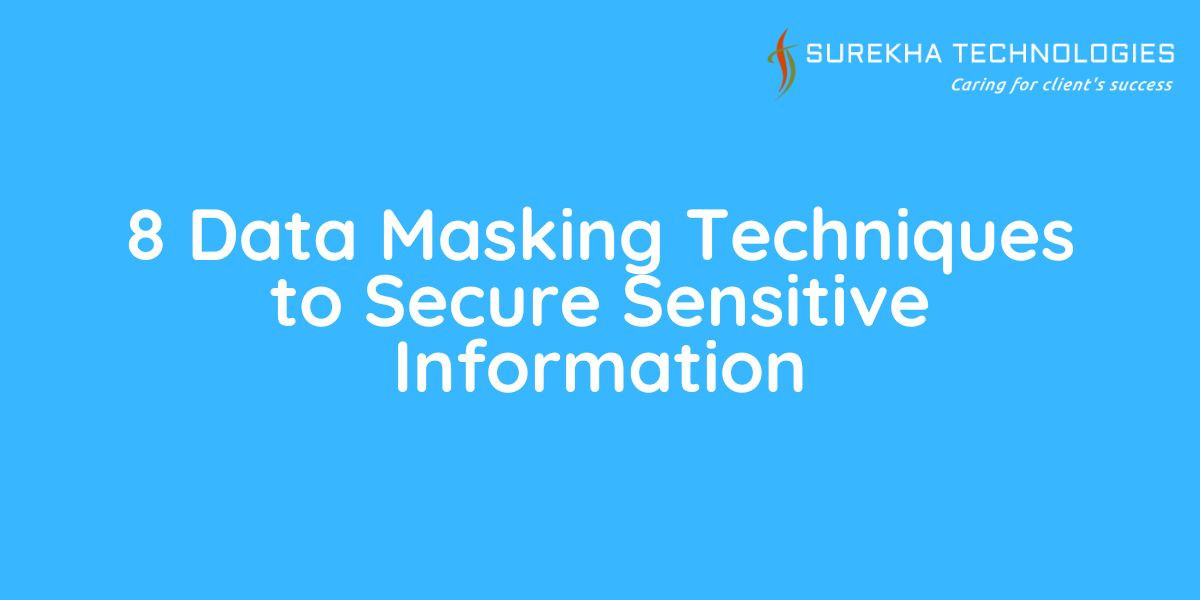In today’s digital landscape, protecting sensitive data is a top priority for businesses. Data Masking is a critical technique used to safeguard information by altering data values while maintaining their usability. This ensures that confidential data remains secure during testing, analytics, and third-party collaborations. Here are eight effective Data Masking techniques used to protect sensitive information.
1. Substitution
Substitution is a Data Masking method that replaces original data with fictional but realistic values. For example, customer names in a database can be replaced with randomly generated names. This ensures that sensitive information is obscured while retaining the structure of the dataset. This technique is commonly used in development and testing environments to prevent unauthorized access to real data.
2. Shuffling
Shuffling involves randomly rearranging the values within a column of a database. This technique ensures that sensitive data remains disguised while maintaining statistical integrity. For instance, in a dataset containing employee salaries, the values can be shuffled so that actual figures are not linked to specific individuals. This form of Data Masking helps in scenarios where statistical analysis is needed without exposing real data.
3. Data Encryption
Encryption transforms sensitive data into an unreadable format using cryptographic algorithms. Only authorized users with a decryption key can revert the data to its original form. Data Masking through encryption is essential for protecting personally identifiable information (PII) in transit and at rest. Common encryption methods include AES (Advanced Encryption Standard) and RSA (Rivest-Shamir-Adleman).
4. Redaction
Redaction is the process of removing or obscuring specific data elements to prevent unauthorized access. This technique is widely used in documents, reports, and medical records, where critical information such as social security numbers or bank account details is blacked out or replaced with symbols (e.g., ****1234). Redaction is a straightforward Data Masking approach for protecting highly sensitive data.
5. Pseudonymization
Pseudonymization replaces personally identifiable information with artificial identifiers or pseudonyms. Unlike encryption, which requires decryption to retrieve original data, pseudonymized data remains functional for analysis while minimizing privacy risks. For instance, in a hospital setting, patient names can be replaced with unique IDs to maintain anonymity while allowing medical research and analysis.
6. Tokenization
Tokenization replaces sensitive data with randomly generated values (tokens) that have no direct relationship with the original data. The actual data is securely stored in a separate token vault. This Data Masking method is widely used in payment processing systems, where credit card numbers are tokenized to protect customers from fraud. Since tokens are useless without the vault, tokenization provides strong security against data breaches.
7. Character Masking
Character masking involves hiding portions of sensitive data while keeping the format recognizable. For example, a credit card number (1234-5678-9012-3456) might be displayed as --****-3456. This technique is commonly used in banking and financial services, allowing users to verify their information without exposing complete data. Character masking helps balance security and usability.
8. Nulling Out
Nulling out replaces sensitive values with null or blank entries. This Data Masking method is often used when only structural integrity needs to be maintained, but the data itself is not required. For example, a database containing customer emails might have the actual addresses removed and replaced with NULL values before sharing with third parties. Although effective, this technique reduces data usability for analysis and reporting.
Conclusion
With growing cybersecurity threats, implementing effective Data Masking techniques is essential to protect sensitive information. Whether through substitution, shuffling, encryption, redaction, pseudonymization, tokenization, character masking, or nulling out, organizations can minimize data exposure while maintaining operational efficiency. By adopting these techniques, businesses can ensure compliance with data privacy regulations and mitigate the risks of data breaches.








